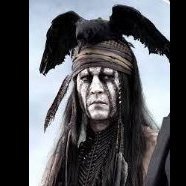Thailand and the Vietnam War
-
Recently Browsing 0 members
- No registered users viewing this page.
-
Topics
-
-
Popular Contributors
-
-
Latest posts...
-
210
Is it possible to rehabilitate a bargirl back into polite society?
Two types of people 1 to 20 100 to 2000 -
221
California in Uproar as Newsom Condemns Trump’s Troop Deployment as ‘Deranged Fantasy’
Don't you realize Fox news is all about trying to keep you afraid and MAGNIFY and misrepresent actual reality? These people DO NOT report the news, they damn near generate it to the extent that they are NOT reporting real happenings. They distort reality into the right-wing BS agenda. Do you have any personal opinion on the matter? -
7
Transport Direct Thailand-US Flights Poised for Takeoff After 2015 Halt
For what it's worth, I took some of the old direct flights back when they were still operating. I've been on both the JFK-BKK flights and the LAX-BKK flights. The first time I flew in 2006, it was from JFK and they took the polar route. At the time, they were using the Airbus A340-500? Something like that. Anyway, the Premium Economy seats were well worth the price. The last time I flew on one of those trips was BKK-LAX. That was 2010 or 2011. I don't remember what plane they used for that flight. Again, Premium Economy is the way to go. An interesting detail: On one of the BBK-JFK flights, I spent almost 17 hours talking to this guy, who was in the seat next to me: I didn't know who he was and he didn't volunteer that information. Anyway, he was telling me about a financial company he had in Australia that had thousands of employees, and that he had thousands of other employees around the world. I thought he was just exaggerating or up making up nonsense, but I let him talk. I did sense, though, that he had a good grip on what was going on in the world. He said he didn't need any money, and that everyone in his family was all set. His advice to me: whatever money you have can be gone in a day, but no one can take away your experiences and your memories. go travel and have fun. Later I was curious wand did some research. That's when I found out he wasn't kidding about his employees around the world. -
35
Renewal of USA passport by mail in Thailand (current details of the process once begun)
I tried doing it myself, then thought I'd give them a shot. They noticed a mistake right away (wrong sized photo) which in itself made the cost worth it. I would have sent the package off, and it would have been sent back - who knows HOW long THAT would have taken - and I'd have to start all over again. Add to that the girls at the front are very easy on the eyes and it's just off Soi Buakhao, to me it was a win win win. -
19
I was born gay…
What if only sleeps with women, but consumes LB porn only? Still bi? -
58
Is trump wearing leg braces?
I had to wear one for a few days after prostate surgery.
-
-
Popular in The Pub




.thumb.jpeg.d2d19a66404642fd9ff62d6262fd153e.jpeg)




Recommended Posts
Create an account or sign in to comment
You need to be a member in order to leave a comment
Create an account
Sign up for a new account in our community. It's easy!
Register a new accountSign in
Already have an account? Sign in here.
Sign In Now